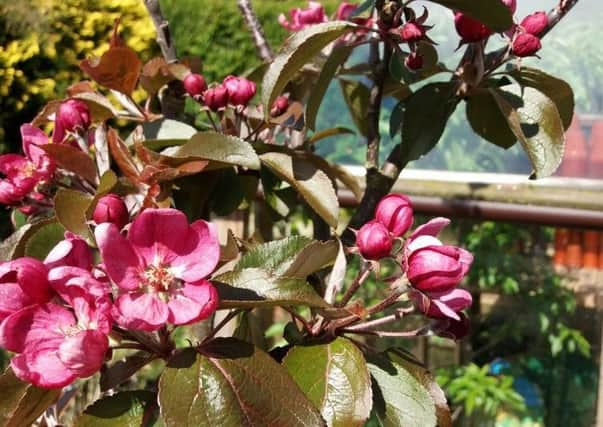Good fruit growing demands daily care


Panic over, it’s time to enjoy what’s good in the garden at present and get on with the daily routine.
Early cherry blossom displays have given way to those of ornamental shrubs, something that will continue via different species deep into autumn.
Advertisement
Hide AdAdvertisement
Hide AdHowever, it’s a clear case of look, but do not disturb until the end of June in respect of nesting birds, allowing for second broods.
Fruit trees and bushes are progressing well with their blooming.
Embryo fruits are in place on the Victoria plum and Conference pear. Gooseberry, black and redcurrants are also well advanced, and to keep it that way a daily inspection is required, the gooseberry especially. One batch of eggs laid by the sawfly or magpie moth can quickly hatch into larvae capable of stripping all the leaves within days.
The strawberry bed has six different cultivars that cover early, mid and late season. Raspberries follow a similar pattern, with four distinct varieties. Both beds were weeded, fed with fish, blood and bone fertiliser, and given a deep organic mulch. Everything is in place so we’re looking for the usual top performance.
Advertisement
Hide AdAdvertisement
Hide AdApples displaying May blossom is such a welcome sight. And when a few trees bloom together there’s confirmation that you’ve got the pollinating group right. Even cultivars known to be self-pollinating benefit from the exchange with others in bloom. Three outstanding varieties for us each year are Discovery, Braeburn and Red Love. Blossom of the latter offers as big a treat as the fruits, which are red to the core.
Two permanent fruits in the unheated greenhouse are demanding daily attention, but both are worth the effort.
The peach is a self-fertile Peregrine, whose fruits are approaching golf-ball size, but after thinning out will grow to cricket ball proportions and ripen around mid-July. The plant is sprayed with water every two days to discourage fruit-boring pests and hot, dry conditions that encourage red spider mite.
Vines are a blessing from late August to November when grapes are there for the cutting. A daily routine is required right now.
Advertisement
Hide AdAdvertisement
Hide AdAll side shoots need the tips pinched out at one leaf joint beyond an embryo flower cluster. Any failing to show sign of flowers after five leaf joints have formed should be removed. This ensures that all the plant energy is channelled into developing bunches of grapes.